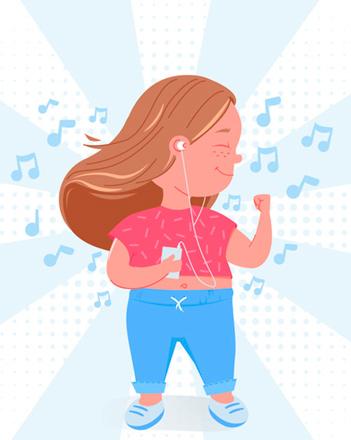You are here
Why do we still use MP3 and JPG?
By Jean-Claude Elias - Jun 24,2020 - Last updated at Jun 24,2020

Photo courtesy of freepik.com
What do the MP3 music and jpg photos digital formats have in common? They both were created as compressed forms of audio and picture contents, to save storage space and transmission bandwidth. In other words these would take less space to store and less time to send over networks, to copy from device to device, and so forth.
But that was some time ago. MP3 was the brainchild of the Fraunhofer Institute in Germany. The patent was registered in 1989. MP3 music was actually implemented and made available to the public by 1996-1997. As for jpg (or jpeg as it is sometimes referred to), its birth goes back to 1992. So, by digital technology standards, this is now history — even ancient history.
Let us not be nostalgic but pragmatic and look at some numbers now. Though exact values may vary, we can say that the compression of MP3 and jpg make files that are about 10 to 15 times smaller than the same, non-compressed, as a rough average.
For comparison, let us see to what extent have disk space and data transfer rates (copying, transmitting) evolved over the same period. Typical disk storage has jumped up an incredible 4,000 times and data transmission or copying about 1,000 times — an average computed taking into consideration wired, wireless and networks. This surely is beyond any comparison with what MP3 and jpg small compression has brought.
So why are we still using digital photo and audio compression? One explanation is that old habits die hard. And digital habits introduced in the 1990s certainly qualify as old.
Another explanation is that we are exchanging more and more audiovisual data over social networks and messaging applications such as WhatsApp. Till now all these kinds of networks seem to prefer compressed data, files that are as small as possible, given the gigantic amount of digital files that are flying over the Internet this way every day.
This is just too bad, for however good the compression may be, nothing is like the uncompressed, original file, in the eye of the professional photographer or for the ears of the demanding audiophile.
Technical people would argue that MP3 music encoded at its highest rate (i.e. 320 Kbps) sounds “almost” as good as its uncompressed equivalent. In the same vein, photos compressed at the highest quality of the jpg process (at a factor of 10 or 12) are “practically” the same as the uncompressed shots. This is a long and complex debate, and no clear conclusion would ever come out of it.
Spotify, the world leading music streaming service, gives you the option to set the quality of the music you are listening to, so as to optimise the experience, while saving your Internet bandwidth, and depending on whether you are listening at home over some ultra-fast fibre optic connection or on the road over wireless 4G. But even at the highest setting, Spotify does not provide better that compressed MP3, at 320 Kbps. Good enough, we have to admit, but just not perfect!
We probably will be still using MP3 and jpg for a long time. The quantity of such compressed digital material already available is overwhelming and is ready for you to use. The technically minded will have the option to go either way (compressed or uncompressed), but even this choice is not an ideal situation, for making the choice and working accordingly takes time and energy, and few of us have that time. We would rather all go with the trend. It is simpler this way, and nothing seems more important than saving time and simplicity of use these days.
Related Articles
If you have adopted JPG-type photos many years ago and have made it your standard way of taking, scanning, viewing, saving and exchanging photos, you may want to keep an eye on the newcomer to the image compression market.
By now most of those who are above say 45 or 50 have digitised the music and the photos they used to collect and keep in older, analogue for
It was bound to happen and it is happening now. Music CDs are clearly on their way out, in a tangible manner.















